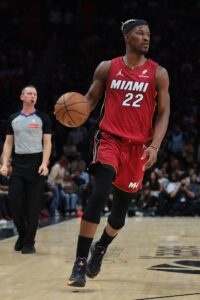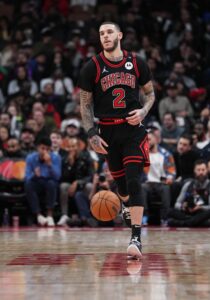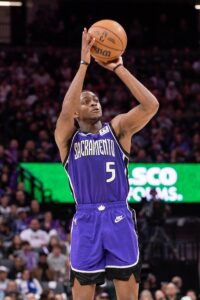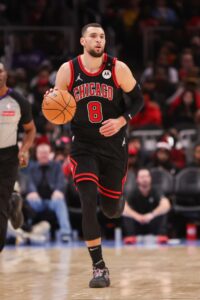After getting word that Kevin Durant was opposed to the idea of reuniting with Golden State, the Warriors have opted to move on to other trade targets, ending their pursuit of the Suns forward, Sam Amick and Anthony Slater of The Athletic confirm, echoing earlier reports.
According to Amick and Slater, the Warriors were willing to make a substantial offer for Durant and might have been in position to land him if he’d been even lukewarm on the possibility of coming back to the Bay Area, but they didn’t want to risk having to deal with a disgruntled KD.
 On the subject of disgruntled stars, Amick and Slater say it’s still up in the air whether the Warriors will get back in the mix for Heat forward Jimmy Butler, who has also made it clear he’s not enthusiastic about the idea of being traded to Golden State.
On the subject of disgruntled stars, Amick and Slater say it’s still up in the air whether the Warriors will get back in the mix for Heat forward Jimmy Butler, who has also made it clear he’s not enthusiastic about the idea of being traded to Golden State.
However, NBA insider Marc Stein reports (via Twitter) that the Warriors have indeed shifted their focus back to trying to acquire Butler.
Golden State’s pursuit of Butler has seemingly been on and off again for the better part of a month. Shortly after the 35-year-old formally requested a trade, reports indicated that the Warriors didn’t plan to seek out a deal for him, but they exhibited renewed interest last week when the Heat’s asking price reportedly dropped.
Although ESPN’s Brian Windhorst said over the weekend that the Warriors were once again backing off Butler after he communicated that he wasn’t interested in signing an extension with the team, reports this week have suggested that Golden State was never fully out of the hunt. With Durant seemingly off the table, it makes sense that the Warriors would once again circle back to the Heat star.
As has been the case for weeks, the Suns and Warriors appear to be the frontrunners for Butler. Phoenix has been unable to work out a deal structured around Bradley Beal due to his no-trade clause and pricey contract, but if the Suns are willing to consider the idea of trading Durant to Miami for Butler, the Heat would certainly be interested, writes Barry Jackson of The Miami Herald.
A swap along those lines would likely require Miami to attach a handful of sweeteners (draft picks, young players, etc.) to entice Phoenix — a third team may also still be necessary due to the Suns’ and Heat’s apron-related restrictions.
A Warriors offer for Butler would likely be centered around Andrew Wiggins, expiring contracts, and draft assets. Dennis Schröder‘s expiring deal (worth $13MM) would probably be part of Golden State’s package, according to Stein (Twitter link).
A team source tells The Athletic that the Warriors remain “determined” to get something done before Thursday’s deadline, so if they miss out on Butler, they could end up pivoting to a secondary target such as Pelicans forward Brandon Ingram or Bulls center Nikola Vucevic.
Regarding Ingram, Jake Fischer of The Stein Line (Twitter link) says the Pelicans have gained some traction on potential deals involving the star forward. Fischer and Stein have reported that the Raptors and Hawks are among the teams talking to New Orleans about Ingram.
As for Vucevic, K.C. Johnson of the Chicago Sports Network (Twitter links) has heard that the Warriors aren’t sure about pursuing the big man at Chicago’s asking price, but suggests a deal remains possible if Golden State can’t land a bigger-name target and/or the Bulls’ price comes down.
 According to Stein, the Bulls actually have some interest in re-signing Ball beyond his current deal, which pays him approximately $21.4MM this season.
According to Stein, the Bulls actually have some interest in re-signing Ball beyond his current deal, which pays him approximately $21.4MM this season.
 In addition to shedding LaVine’s contract and creating significant short- and long-term cap flexibility, the Bulls will get their very valuable first-rounder back — even if that pick had landed in its protected range this season, Chicago would still have owed a top-eight protected first-rounder to San Antonio in 2026. By reacquiring that pick, the Bulls will regain full control of their first-rounders going forward.
In addition to shedding LaVine’s contract and creating significant short- and long-term cap flexibility, the Bulls will get their very valuable first-rounder back — even if that pick had landed in its protected range this season, Chicago would still have owed a top-eight protected first-rounder to San Antonio in 2026. By reacquiring that pick, the Bulls will regain full control of their first-rounders going forward.